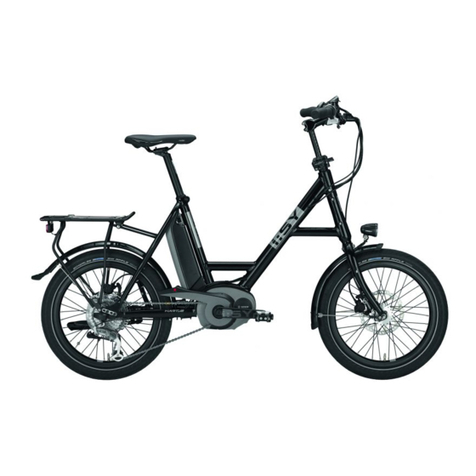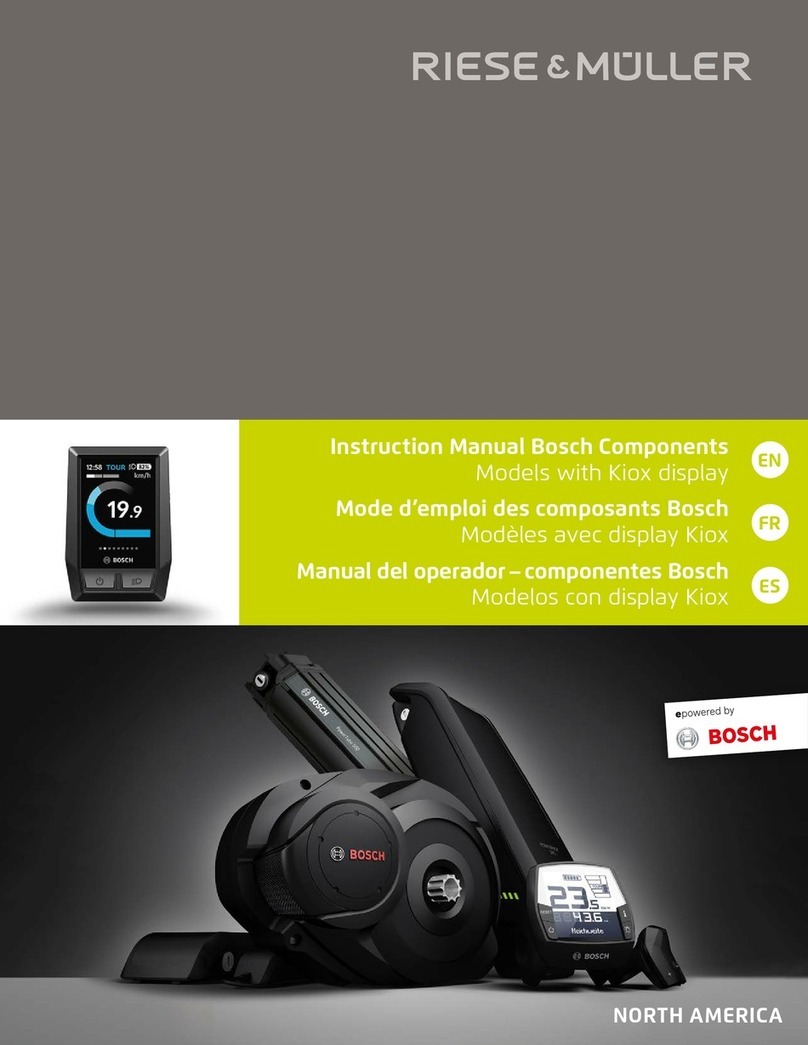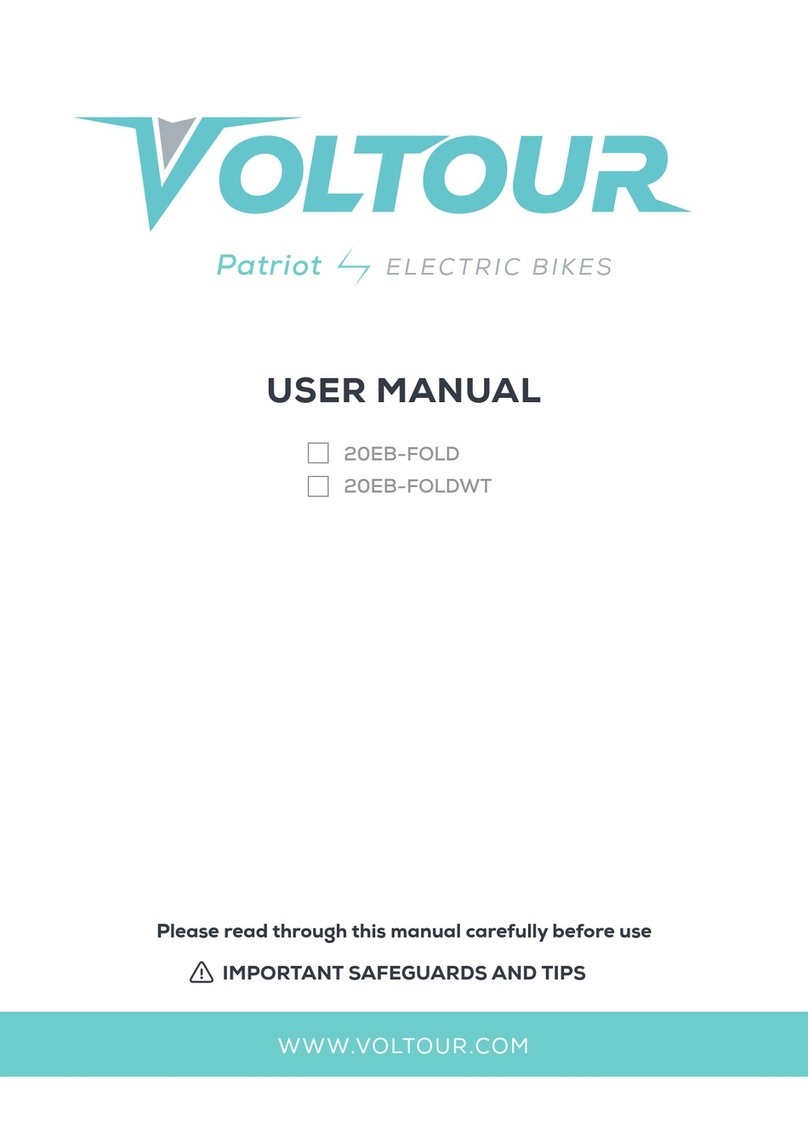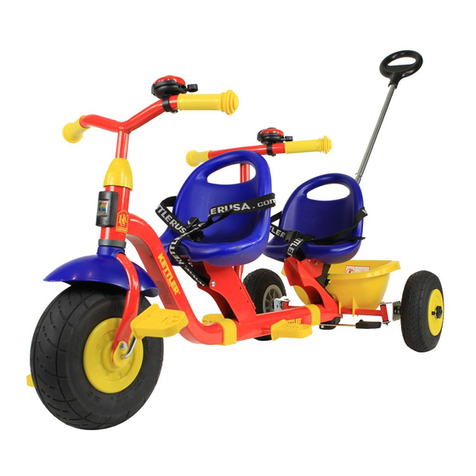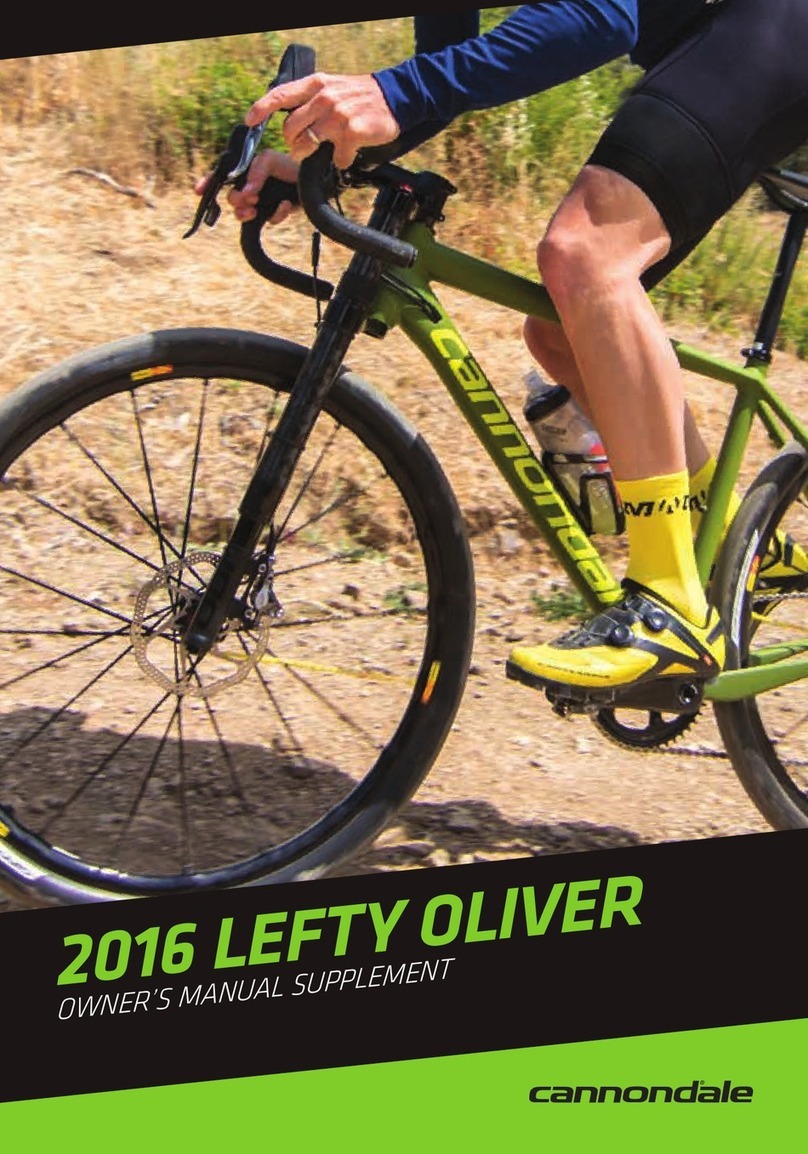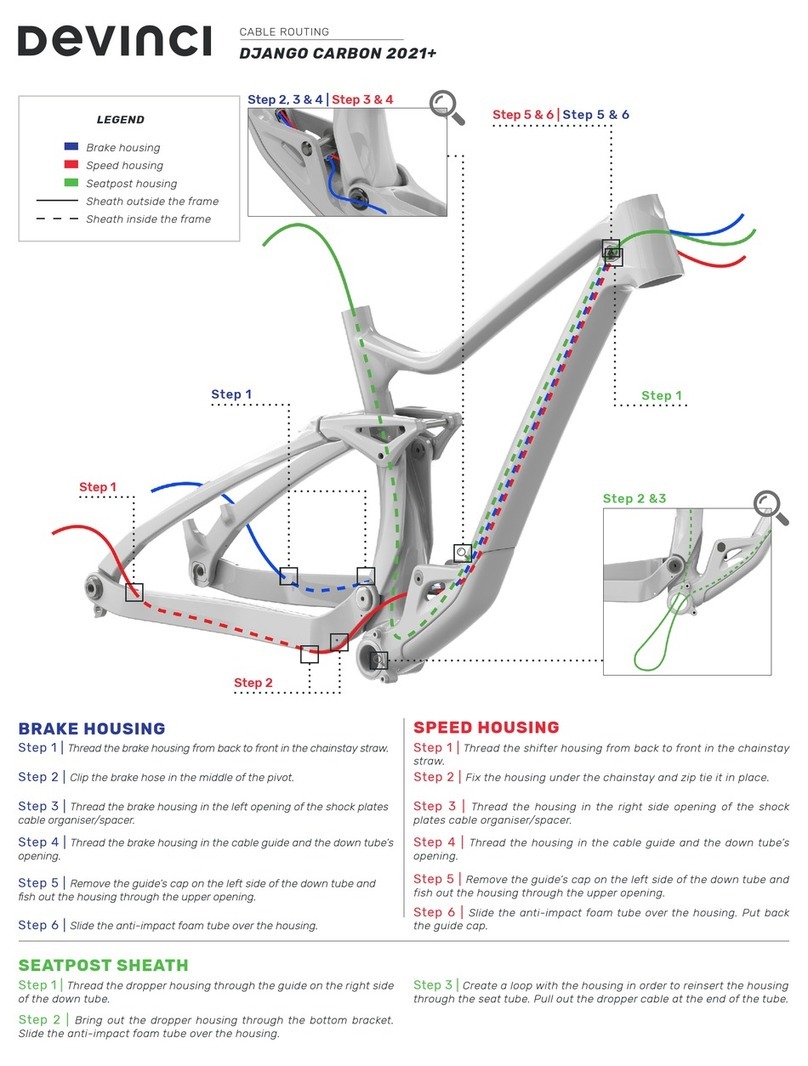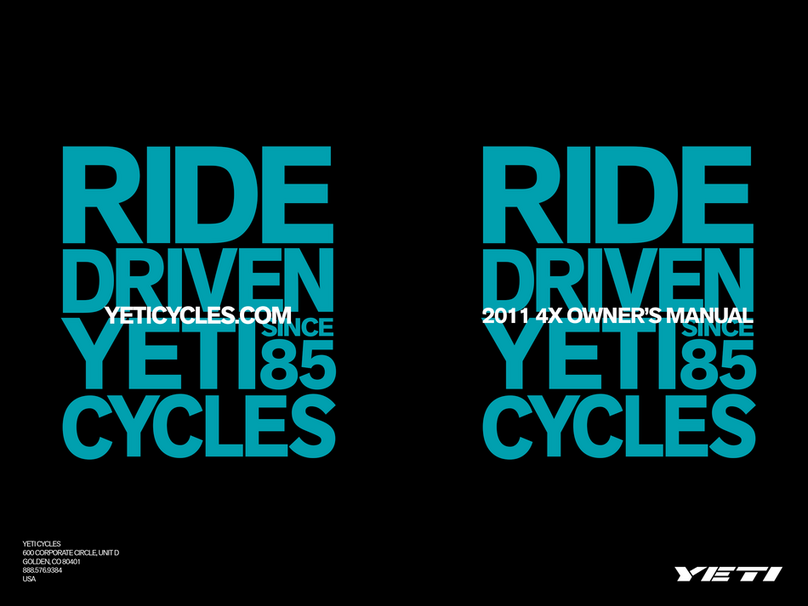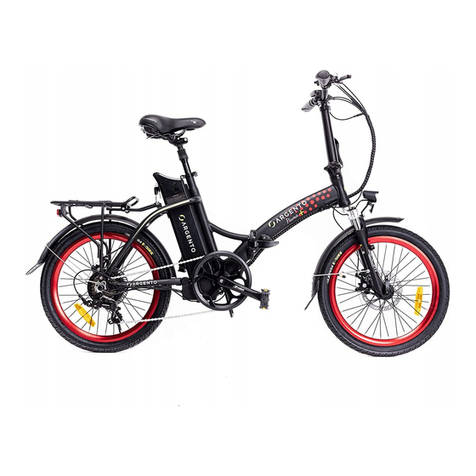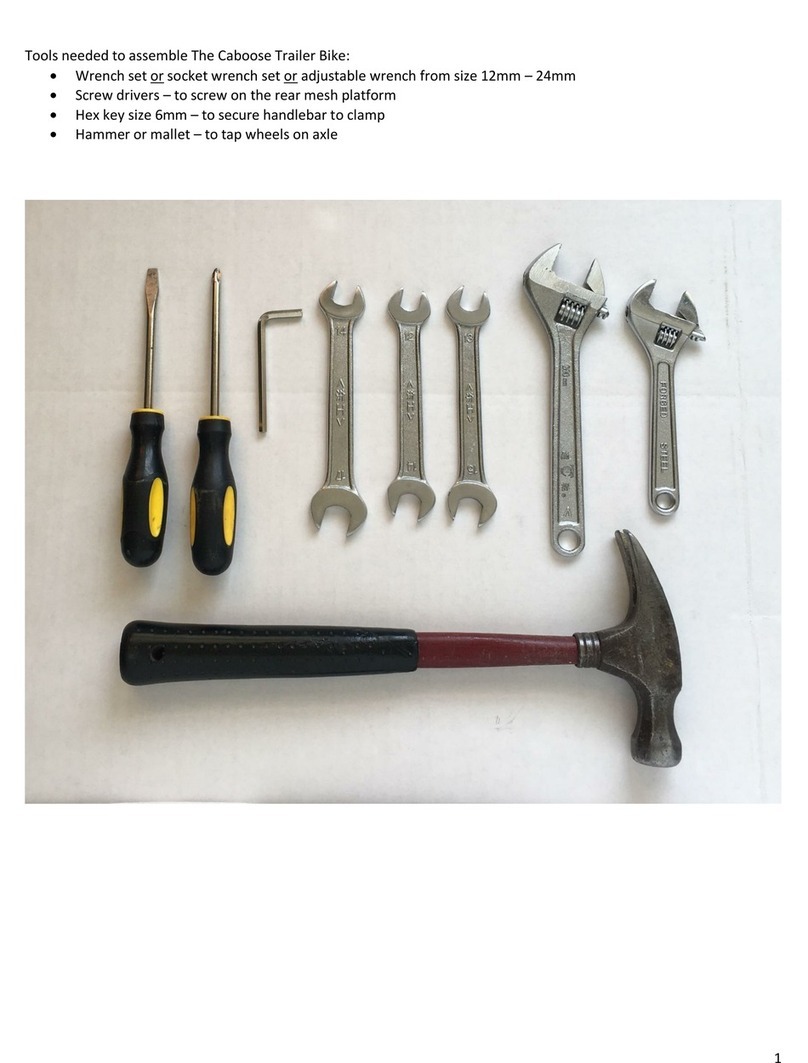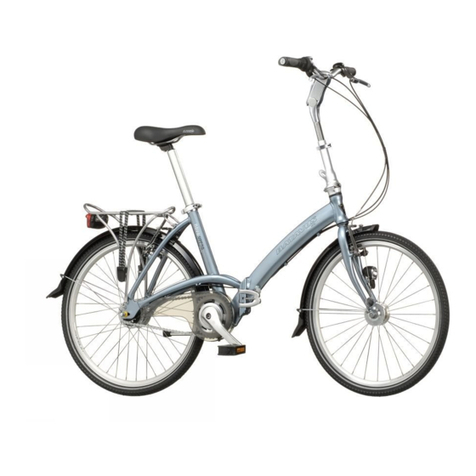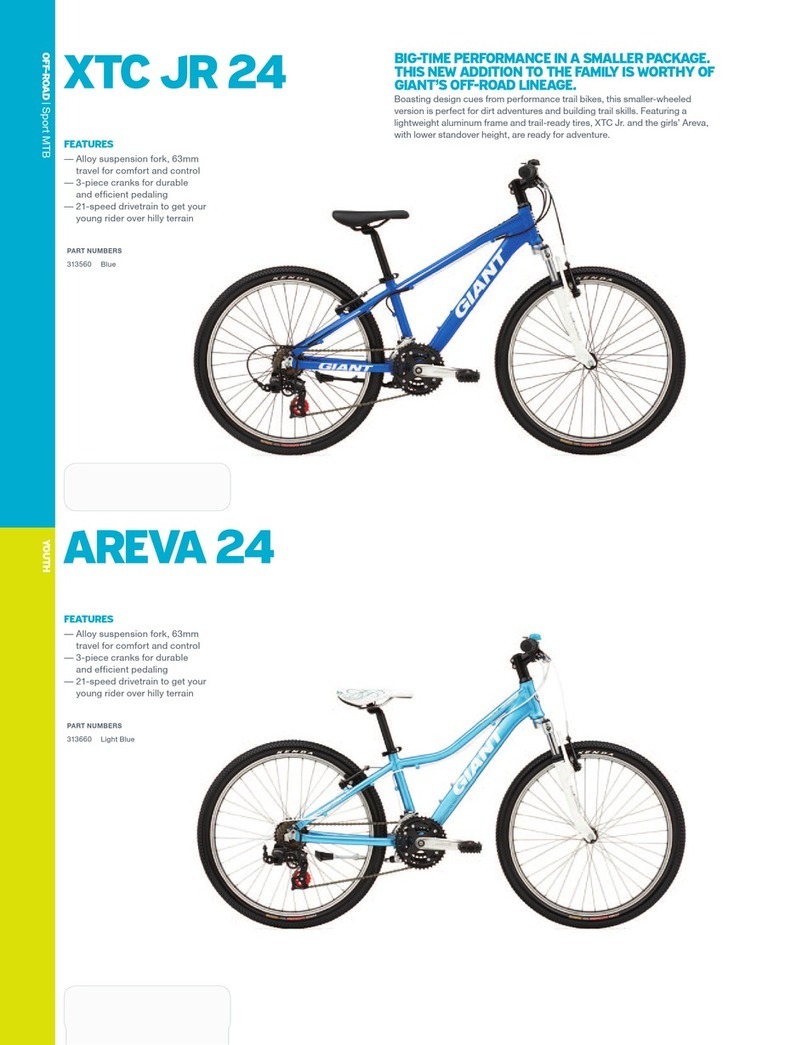Bosch BULLS Twenty 6 EVO Quick guide

TRANSLATION OF THE ORIGINAL OPERATING INSTRUCTIONS
IMPORTANT
READ CAREFULLY BEFORE USE
KEEP SAFE TO CONSULT AT A LATER DATE
20-26-3001; 20-26-4001
MY20B01 - 52_1.0_02.10.2019
BULLS Twenty 6 EVO; BULLS Twenty 6 EVO Team
WALK
WALK
WALK
W
AL
W
W
W
W
W
W
A
A
L
K
K
K
K
K
W
W
W
W
W
W
W
W
WWWW
WW
W
W
W
W
W
W
W
W
W
W
W
W
W
W
W
A
A
W
W
W
A
W
W
W
W
W
W
W
W
W
W
A
WW
AAAA
AA
A
A
A
A
A
A
A
A
A
A
A
A
LLLL
LL
L
AA
A
A
A
A
L
L
L
L
L
L
L
K
KKKK
KK
K
K
K
K
K
KK
K
K
K
K
K
K
K
K
K
K
K
K
K
K

MY20B01 - 52_1.0_02.10.2019 2
Contents
Contents
1 About these operating instructions 6
1.1 Manufacturer 6
1.2 Type number and model 6
1.3 Identifying the operating instructions 6
1.4 Subject to change 6
1.5 Language 7
1.6 Laws, standards and directives 7
1.7 For your information 7
1.7.1 Warnings 7
1.7.2 Markups 7
1.8 Nameplate 8
2 Safety 9
2.1 General warnings 9
2.2 Toxic substances 10
2.3 Requirements for the rider 11
2.4 Vulnerable groups 11
2.5 Data privacy 11
2.6 Personal protective equipment 11
2.7 Safety markings and safety instructions 11
2.8 Emergency 12
2.8.1 What to do in an emergency 12
2.8.2 First aid treatment 12
2.8.3 Fighting fire 13
2.8.4 Leaking fluids 13
2.8.4.1 Oils and lubricants from the fork 13
2.8.4.2 Oils and lubricants from the rear frame
damper 13
3Overview 14
3.1 Description 15
3.1.1 Wheel 15
3.1.1.1 Valve 15
3.1.2 Suspension 15
3.1.2.1 Rigid fork 15
3.1.2.2 Suspension fork 15
3.1.2.3 Steel suspension fork 16
3.1.2.4 Air suspension fork 16
3.1.2.5 Suntour rear frame damper 17
3.1.2.6 FOX rear frame damper 17
3.1.3 Brake system 17
3.1.3.1 Rim brake 17
3.1.3.2 Disc brake 18
3.1.3.3 Back-pedal brake 18
3.1.3.4 ABS 18
3.1.4 Electric drive system 20
3.1.5 Rechargeable battery 20
3.1.5.1 Frame battery 21
3.1.5.2 Pannier rack battery 21
3.1.5.3 Integrated battery 22
3.1.6 Display 22
3.1.7 Riding light 22
3.1.8 Charger 22
3.2 Proper use 23
3.3 Improper use 24
3.4 Technical data 25
3.4.1 Pedelec 25
3.4.2 ActiveLine motor 25
3.4.3 ActiveLine Plus motor 25
3.4.4 Performance Line Cruise motor 25
3.4.5 Performance Line Speed motor 25
3.4.6 Performance Line CX motor 25
3.4.7 Pedelec lighting 26
3.4.8 PowerPack 300 battery 26
3.4.9 PowerPack 400 battery 26
3.4.10 PowerPack 500 battery 26
3.4.11 PowerTube battery 26
3.4.12 Purion display 26
3.4.13 USB port 26
3.4.14 BOSCH pedelec ABS BAS100 27
3.4.15 Emissions 27
3.4.16 Tightening torque 27
3.5 Environmental requirements 28
3.6 Description of controls and screens 30
3.6.1 Handlebars 30
3.6.2 Battery level indicator 30
3.6.3 Control panel on-screen indicators 30
3.6.3.1 Unit of measure for speed 30
3.6.3.2 Tachometer screen 30
3.6.3.3 Function display 31
3.6.3.4 Gear recommendation 31
3.6.3.5 Tachometer screen 31
3.6.3.6 Function display 31
3.6.4 System message 34
3.6.5 ABS indicator lamp 34
4 Transporting and storing 35
4.1 Physical transport characteristics 35
4.1.1 Dimensions during transportation 35
4.1.2 Transport weight 35
4.1.3 Designated handles/lifting points 35
4.2 Transporting 35
4.2.1 Transporting the battery 36
4.2.2 Shipping the battery 36
4.2.3 Using the brake transport securing
system 36
4.3 Storing 36
4.3.1 Break in operation 36
4.3.1.1 Preparing a break in operation 36
4.3.1.2 Taking out of operation 36
5 Assembly 37
5.1 Required tools 37
5.2 Unpacking 37
5.2.1 Scope of delivery 37

MY20B01 - 52_1.0_02.10.2019 3
Contents
5.3 Commissioning 38
5.3.1 Checking the battery 38
5.3.2 Installing the wheel in the Suntour fork 38
5.3.2.1 Screw-on axle (15 mm) 38
5.3.2.2 Screw-on axle (20 mm) 39
5.3.2.3 Quick release axle 39
5.3.2.4 Quick release 41
5.3.3 Installing the wheel in the FOX fork 42
5.3.3.1 Quick release (15 mm) 42
5.3.3.2 Kabolt axle 43
5.3.4 Checking the stem and handlebars 43
5.3.4.1 Checking connections 43
5.3.4.2 Firm hold 43
5.3.4.3 Checking the headset backlash 43
5.4 Pedelec sale 43
6Operation 44
6.1 Risks and hazards 44
6.1.1 Personal protective equipment 45
6.2 Tips for a greater range 45
6.3 Error message 46
6.3.1 Display 46
6.3.2 Rechargeable battery 48
6.4 Instruction and customer service 49
6.5 Adjusting the pedelec 49
6.5.1 Adjusting the saddle 49
6.5.1.1 Adjusting the saddle tilt 49
6.5.1.2 Determining the seat height 49
6.5.1.3 Adjusting the seat height with quick
release 50
6.5.1.4 Height-adjustable seat post 50
6.5.1.5 Adjusting the seat position 51
6.5.2 Adjusting the handlebars 51
6.5.3 Adjusting the stem 51
6.5.3.1 Adjusting the height of the handlebars 51
6.5.3.2 Adjusting the quick release clamping
force 52
6.5.4 Setting the brake 52
6.5.4.1 Setting the grip distance on a
Magura HS33 brake lever 52
6.5.4.2 Setting the grip distance on a
Magura HS22 brake lever 53
6.5.4.3 Setting the grip distance on a
Magura disc brake lever 53
6.5.4.4 Setting the pressure point on a
Magura brake lever 54
6.5.5 Retracting the brake linings 54
6.5.6 Adjusting Suntour fork 54
6.5.6.1 Adjusting the negative deflection 54
6.5.6.2 Adjusting the steel suspension fork
negative deflection 55
6.5.6.3 Adjusting the air suspension fork
negative deflection 55
6.5.6.4 Adjusting the air suspension fork
rebound 56
6.5.7 Adjusting the FOX fork 56
6.5.7.1 Adjusting the negative deflection 56
6.5.7.2 Adjusting the rebound 57
6.5.8 Setting the Suntour rear frame damper 58
6.5.8.1 Adjusting the negative deflection 58
6.5.8.2 Adjusting the rebound 58
6.5.8.3 Setting the compression 58
6.5.9 Setting the FOX rear frame damper 59
6.5.9.1 Adjusting the negative deflection 59
6.5.9.2 Adjusting the rebound 59
6.6 Accessories 61
6.6.1 Child seat 61
6.6.2 Bicycle trailers 62
6.6.3 Pannier rack 62
6.7 Before each ride 63
6.8 Check list before each ride 63
6.9 Using the kickstand 64
6.9.1 Raising the kickstand 64
6.9.1.1 Parking the pedelec 64
6.10 Using the pannier rack 64
6.11 Rechargeable battery 65
6.11.1 Frame battery 65
6.11.1.1 Removing the frame battery 65
6.11.1.2 Inserting the frame battery 65
6.11.2 Pannier rack battery 65
6.11.2.1 Removing the pannier rack battery 65
6.11.2.2 Inserting the pannier rack battery 65
6.11.3 Integrated battery 65
6.11.3.1 Removing the integrated battery 65
6.11.3.2 Inserting the integrated battery 66
6.11.4 Charging the battery 66
6.11.5 Charging the dual battery 67
6.11.5.1 Charging process when two batteries
are used 67
6.11.5.2 Charging process when one battery
is used 67
6.11.6 Using double battery model with a
single battery only 67
6.11.7 Waking the battery 67
6.12 Electric drive system 68
6.12.1 Switching on the electric drive system 68
6.12.2 Switching off the drive system 68
6.13 Display 69
6.13.1 Overview of actions on the display
screen 69
6.13.2 Switching on the display 69
6.13.3 Switching off the display 69
6.14 Using the push assist system 70
6.14.1 Using the riding light 70
6.14.2 Selecting the level of assistance 70

MY20B01 - 52_1.0_02.10.2019 4
Contents
6.14.3 Journey information 70
6.14.3.1 Switching the journey information 70
6.14.3.2 Resetting the trip distance 70
6.14.3.3 Resetting the range 71
6.14.3.4 Changing the tachometer unit 71
6.14.3.5 Displaying versions and type numbers 71
6.14.4 Using the USB port 71
6.14.5 Replacing the battery 71
6.15 Brake 72
6.15.1 Using the brake lever 73
6.15.2 Using the back-pedal brake 73
6.15.3 Using ABS 73
6.15.3.1 While riding 74
6.16 Suspension and damping 74
6.16.1 Adjusting the compression in the
Suntour fork 74
6.16.2 Adjusting the compression in
the Suntour rear frame damper 75
6.16.3 Adjusting the compression in the Fox fork
75
6.16.4 Adjusting the compression in the
Fox rear frame damper 76
6.16.5 Adjusting the rebound in the
RockShox rear frame damper 76
6.16.6 Adjusting the compression in a
RockShox damper 77
6.17 Gear shift 77
6.17.1 Using the derailleur gears 77
6.17.2 Using the hub gear 77
6.17.3 Using eShift 78
6.17.3.1 eShift with Shimano DI2 automatic
hub gears 78
6.17.3.2 eShift with manual Shimano DI2
hub gears 79
6.17.3.3 eShift with Shimano DI2 automatic
hub gears 79
6.17.3.4 eShift with NuVinci H|Sync/enviolo
with Optimized H|Sync 79
6.17.3.5 eShift with Rohloff E-14 Speedhub
500/14 79
7 Cleaning and servicing 80
7.1 Cleaning after each ride 80
7.1.1 Cleaning the suspension fork 80
7.1.2 Cleaning the rear frame damper 80
7.1.3 Cleaning the pedals 80
7.2 Basic cleaning 81
7.2.1 Cleaning the frame 81
7.2.2 Cleaning the stem 81
7.2.3 Cleaning the wheel 81
7.2.4 Cleaning the drive elements 81
7.2.5 Cleaning the rear frame damper 81
7.2.6 Cleaning the chain 82
7.2.7 Cleaning the battery 82
7.2.8 Cleaning the display 82
7.2.9 Cleaning the drive unit 82
7.2.10 Cleaning the brake 83
7.3 Servicing 83
7.3.1 Servicing the frame 83
7.3.2 Servicing the stem 83
7.3.3 Servicing the fork 83
7.3.4 Servicing the drive elements 83
7.3.5 Servicing the pedals 83
7.3.6 Servicing the chain 83
7.3.7 Servicing the drive elements 83
7.4 Maintenance 84
7.4.1 Wheel 84
7.4.1.1 Checking the tyres 84
7.4.1.2 Checking the rims 84
7.4.1.3 Checking and adjusting the tyre
pressure – Dunlop valve 84
7.4.1.4 Checking and adjusting the tyre
pressure – presta valve 85
7.4.1.5 Checking and adjusting the tyre
pressure – Schrader valve 85
7.4.2 Brake system 85
7.4.3 Checking the brake linings for wear 85
7.4.4 Checking the pressure point 85
7.4.5 Checking the brake discs for wear 86
7.4.6 Electrical cables and brake cables 86
7.4.7 Gear shift 86
7.4.8 Stem 86
7.4.9 USB port 86
7.4.10 Checking the belt and chain tension 86
8 Maintenance 87
8.1 Axle with quick release 88
8.1.1 Checking the quick release 88
8.2 Adjusting the gear shift 88
8.2.1 Cable-operated gear shift, single-cable 89
8.2.2 Cable-operated gear shift, dual-cable 89
8.2.3 Cable-operated twist grip, dual-cable 89
9 Troubleshooting, fault clearance
and repair 90
9.1 Troubleshooting and fault clearance 90
9.1.1 The drive system or display do not
start up 90
9.1.2 Error message 90
9.1.3 Assistance function errors 91
9.1.4 Battery error 92
9.1.5 Display errors 93
9.1.6 Lighting does not work 94
9.1.7 Other errors 94
9.2 Repair 95
9.2.1 Original parts and lubricants 95
9.2.2 Replacing the lighting 95
9.2.3 Adjusting the headlight 95

MY20B01 - 52_1.0_02.10.2019 5
Contents
9.2.4 Tyre clearance check 95
10 Recycling and disposal 96
11 Documents 97
11.1 Parts list 97
11.2 Assembly report 98
11.3 Maintenance log 100
11.4 Charger operating instructions 103
13 Glossary 113
13.1 Abbreviations 115
13.2 Simplified terms 115
I. Translation of the original
EU Declaration of Conformity 116

MY20B01 - 52_1.0_02.10.2019 6
About these operating instructions
1 About these operating instructions
Thank you for your trust!
BULLS pedelecs are premium quality bicycles.
You have made an excellent choice. Your
specialist dealer will provide you with guidance
and instruction and assemble your product. Your
specialist dealer will also be happy to assist you in
the future whether you require maintenance,
conversion or repair.
You are receiving these operating instructions
with your new pedelec. Please take time to
become familiar with your new pedelec and follow
the tips and suggestions in the operating
instructions. They will help you to enjoy your
pedelec for a long time to come. We hope you
have fun and wish you well on all of your rides!
These operating instructions are mainly designed
for the rider or the operator. They aim to ensure
that non-professionals can use the pedelec safely.
Download the operating
instructions onto your phone
at the following link, so that
you can use them when you
are out riding:
www.bulls.de/service/
downloads.
1.1 Manufacturer
The pedelec manufacturer is:
ZEG Zweirad-Einkaufs-Genossenschaft eG
Longericher Straße 2
50739 Köln, Germany
Tel.: +49 221 17959 0
Fax: +49 221 17959 31
Email: [email protected]
Website: www.zeg.de
1.2 Type number and model
These operating instructions are an integral part
of pedelecs with the following type numbers:
*The type number was not available when we
went to press.
1.3 Identifying the operating
instructions
You will find the operating instructions
identification number at the bottom left-hand side
of each page. The identification number consists
of the document number, the version number and
the release date.
1.4 Subject to change
The information contained in these operating
instructions are the approved technical
specifications at the time of printing. Any
significant changes will be included in a new issue
of the operating instructions.
You will find any modifications to these operating
instructions:
www.bulls.de/service/downloads.
Notice
These operating instructions are not a substitute
for personal instruction by the supplying specialist
dealer.
These operating instructions are an integral part
of the pedelec. Therefore, if it is re-sold at a later
time, they must be handed over to the subsequent
owner.
Sections are also designed especially for the
specialist dealer. These sections aim to ensure
that specialist dealers complete initial assembly
and maintenance safely and reliably. The
sections for specialist dealers are highlighted in
grey and marked with a spanner symbol.
Type no. Model Pedelec type
20-26-4001 Twenty 6 Evo 26" Bicycle for young
adults
20-26-3001 Twenty 6 Evo Team 26 Bicycle for young
adults
Table 1: Type number, model and pedelec type
Identification number MY20B01 - 52_1.0_02.10.2019

MY20B01 - 52_1.0_02.10.2019 7
About these operating instructions
1.5 Language
The original operating instructions are written in
German. A translation is not valid without the
original operating instructions.
1.6 Laws, standards and directives
These operating instructions comply with the
essential requirements specified in:
• Machinery Directive 2006/42/EC
• Electromagnetic Compatibility Directive
2014/30/EU
• ISO 20607:2018 Safety of machinery –
Instruction handbook – General drafting
principles
• EN 15194:2018 Cycles – Electrically power
assisted cycles – pedelec bicycles
• EN 11243:2016, Cycles – Luggage carriers for
bicycles – Requirements and test methods
• EN ISO 17100:2016-05, Translation Services –
Requirements for translation service.
1.7 For your information
Different markings are used in these operating
instructions to make them easier to read.
1.7.1 Warnings
Hazardous situations and actions are marked with
warnings. The warnings in these operating
instructions are indicated as follows:
1.7.2 Markups
The following conventions are used in these
operating instructions:
Will lead to serious or even fatal injuries if
ignored. High-risk hazard.
May lead to serious or even fatal injuries if
ignored. Medium-risk hazard.
May lead to minor or moderate injuries. Low-risk
hazard.
Notice
May lead to material damage if ignored.
DANGER
!
WARNING
!
CAUTION
!
Convention Use
Italics Glossary term
Underlined in blue Link
Underlined in grey Cross references
Check marks Requirements
Triangle Instruction for action
1Instruction for
action
Several instructions for
action in specified order
Result of the action
SPACED Indicators on the display
screen
• Bulleted lists
Only applies to pedelecs
with this equipment
Other models feature
other equipment. A note
beneath the heading
indicates components
which can be used as an
alternative.
Table 2: Markups
Instructions for the specialist dealer are
highlighted in grey and marked with a spanner
symbol. Information for specialist dealers does
not require non-professionals to take any action.

MY20B01 - 52_1.0_02.10.2019 8
About these operating instructions
1.8 Nameplate
The nameplate is situated on the frame. You will
find the precise position of the nameplate in
Figure 2. You will find thirteen pieces of
information on the nameplate.
Figure 1: Nameplate, example
ZEG Zweirad-Einkaufs-
Genossenschaft eG
Longericher Str. 2
50739 Köln, Germany
Typ:
20-16-0001
EN 15194
0,25 kW / 25 km/h
zGG 180 kg
EPAC 25 kg
BJ 2019 / MJ 2020
nach
EPAC
2
3
1
4
5
6
7
89
12
13
10
11
No. Designation Description
1CE marking The manufacturer uses the CE marking to declare that the pedelec complies with
applicable requirements.
2 Manufacturer's contact details You can contact the manufacturer at this address. You can find more information in
Section 1.1.
3 Type number
All pedelec models have an eight-digit type number, which is used to specify the design
model year, the type of pedelec and the version. You can find more information in Section
1.2.
4 Maximum continuous power The maximum continuous power is the maximum power for the electric motor output shaft
during 30 minutes.
5 Permitted total weight The permitted total weight is the weight of the fully assembled pedelec with the rider and
baggage.
6 Year of manufacture The year of manufacture is the year in which the pedelec was manufactured. The
production period is from August 2019 to July 2020.
7 Pedelec type You can find more information in Section 3.2.
8 Safety markings You can find more information in Section 1.7.
9 Disposal instructions You can find more information in Section 10.
10 Area of use You can find more information in Section 3.5.
11 Model year
The model year refers to the first production year that the series-manufactured pedelec
was produced in the version and is not always identical with the year of manufacture.
The year of manufacture may be before the model year in some cases. If no technical
modifications are introduced to the series, production may continue of pedelecs from a
previous model year.
12 Weight of the ready-to-ride pedelec The indicated weight for a ready-to-ride pedelec refers to the weight at the time of
purchase. The weight of each additional accessory must be added to this weight
13 Shut-off speed Speed reached by the pedelec at the moment when the current has dropped to zero or to
the no load current value.
Table 3: Nameplate details

MY20B01 - 52_1.0_02.10.2019 9
Safety
2 Safety
2.1 General warnings
Risk of fire and explosion due to faulty battery
The safety electronics may fail if the battery is
damaged or faulty. The residual voltage can
cause a short circuit. The battery may self-ignite
and explode.
If the battery becomes deformed or begins to
smoke, keep at a safe distance and disconnect
the power supply at the socket.
Contact the fire service immediately.
Never extinguish a damaged battery with
water or allow it to come into contact with
water.
If the battery is dropped or struck but shows no
signs of external damage, remove it from
service and observe it for at least 24 hours.
Batteries with external damage must be
removed from service immediately.
Faulty batteries are hazardous goods.
Dispose of faulty batteries properly and as
quickly as possible.
Store battery in a dry place until disposal.
Never store in the vicinity of flammable
substances.
Never open or repair the battery.
Only use and charge the battery and
accessories if they are in perfect condition.
Electric shock in case of damage
Damaged chargers, cables and plug connectors
increase the risk of electric shock.
Check the charger, cable and plug connector
before each use. Never use a damaged
charger.
WARNING
!
CAUTION
!
Risk of fire and explosion due to short circuit
Small metal objects may connect the battery's
electrical terminals. The battery may self-ignite
and explode.
Keep paper clips, keys and other small item
away from the battery. Do not insert into the
battery.
Risk of fire and explosion due to incorrect
charger
Batteries which are recharged with an unsuitable
charger may become damaged internally. This
may result in fire or an explosion.
Only use batteries approved for the pedelec.
Mark the supplied charger clearly to prevent
mix-ups – with the frame number or type
number, for example.
Risk of fire and explosion due to penetration by
water
The battery is only protected from spray water.
Penetration by water can cause a short circuit.
The battery may self-ignite and explode.
Never immerse the battery in water.
If there is reason to believe that water may
have entered into the battery, the battery must
be removed from service.
Risk of fire and explosion due to high
temperatures
Temperatures over 60 °C can also cause liquid to
leak from the battery and the battery will become
damaged. The battery may self-ignite and
explode.
Protect the battery against heat.
Never store next to hot objects.
Never expose the battery to sustained direct
sunlight.
Avoid wide temperature fluctuations.
CAUTION
!

MY20B01 - 52_1.0_02.10.2019 10
Safety
2.2 Toxic substances
Fire caused by overheated charger
The charger heats up when charging the battery.
In case of insufficient cooling, this can result in
fire or burns to the hands.
Never use the charger on a highly flammable
surface (e.g. paper, carpet etc.).
Never cover the charger during the charging
process.
Never leave the battery unattended during
charging.
Electric shock caused by penetration by
water
If water penetrates into the charger, there is a risk
of electric shock.
Never charge the battery outdoors.
Notice
If you leave a key inserted when riding or
transporting the pedelec, it may break off or the
locking system may open accidentally.
Remove the key from the battery lock
immediately after use.
We recommend that you attach the key to a
key ring.
Intoxication from suspension oil
Suspension oil in the rear frame damper is toxic to
the touch, irritates respiratory tracts and causes
cancer, sterility and mutation in germ cells.
Never disassemble the rear frame damper.
Never allow suspension oil to come into
contact with the skin.
CAUTION
!
WARNING
!
Environmental hazard posed by oil and
lubricants from rear frame damper
The rear frame damper contains toxic and
environmentally harmful oils and lubricants. Such
fluids
will contaminate if they enter the sewers or
groundwater.
Dispose of oils and lubricants which have
leaked from the rear frame damper in an
environmentally responsible way in
accordance with statutory regulations. Contact
your specialist dealer.
Environmental hazard posed by oil and
lubricants from the fork
The fork contains toxic, environmentally harmful oils
and lubricants. Such fluids will contaminate if they
enter the sewers or groundwater.
The fork must be repaired immediately if oils
and lubricants are leaking out. Contact your
specialist dealer.
Dispose of leaked oils and lubricants in an
environmentally responsible way in
accordance with statutory regulations. Contact
your specialist dealer.
Chemical burns to the skin and eyes caused by
faulty battery
Liquids and vapours may leak from damaged or
faulty batteries. Excessive temperatures can also
cause liquid to leak from the battery and the
battery will become damaged. They can irritate
the airways and cause burns.
Avoid contact with leaked liquids.
Take in fresh air. Consult doctor in the event of
pain or discomfort.
Immediately consult a doctor in case of
contact with the eyes or any discomfort.
In case of contact with the skin, rinse off
immediately with water.
Ventilate the room well.
CAUTION
!

MY20B01 - 52_1.0_02.10.2019 11
Safety
2.3 Requirements for the rider
If there are no legal requirements for pedelec
riders, we recommend that the rider should be a
minimum 14 years of age and have experience
with muscle-powered bicycles.
The rider must demonstrate adequate physical
and mental abilities to ride on public roads.
According to national regulations, children up to
the age of 10 are allowed to ride on footpaths at
an appropriate speed with the pedelec switched
off.
Children under the age of 14 may use the pedelec
under the supervision of a parent or guardian only.
If minors are to use the pedelec, comprehensive
instruction should be provided by or in the
presence of the legal guardians. Supervised use
should also be scheduled until it is certain that the
pedelec is being used as per these operating
instructions. Legal guardians hold sole
responsibility for determining whether minors are
capable of using the pedelec.
Children may only inspect, care for and maintain
the pedelec under the instruction of a parent or
guardian.
2.4 Vulnerable groups
You must keep batteries and charger away from
children and people with reduced physical,
sensory or mental capabilities or lacking in
experience and knowledge. Only adults may
install, remove and charge the battery.
The parent or guardian must check that the
vehicle is in a ready-to-ride condition before
setting off.
The pedelec is very heavy for children. Children
must not carry the pedelec (e.g. up or down
stairs). Children must get used to the heavy
weight of the pedelec.
Before a child or adolescent can ride a pedelec,
they must be able to ride a bicycle safely in traffic.
The child's individual learning development must
be taken into account.
The attention span of children 8 years and older is
about 30 minutes. The driving distance and
duration should therefore be adapted to the child's
abilities.
If minors use the pedelec, comprehensive
instruction should be provided by or in the
presence of the legal guardians. Supervised use
should also be scheduled until the pedelec is
being used as per these operating instructions.
The size of the pedelec must be checked regularly
for orthopaedic reasons. A check must be made at
least every three months to make sure that the
permitted total weight is being observed.
2.5 Data privacy
During maintenance, the pedelec is connected to
the diagnosis tool and data is transferred to Bosch
Pedelec Systems (Robert Bosch GmbH)
regarding the use of electric drive components to
help improve the product. You will find more
information on the Bosch Pedelec website
https://www.bosch-ebike.com/en/.
2.6 Personal protective equipment
We recommend that you wear a suitable cycling
helmet. We also recommend that you wear sturdy
footwear and typical, close-fitting clothing for
bicycles.
2.7 Safety markings and safety
instructions
The Nameplate contains the following safety
markings instructions:
Symbol Explanation
General warning
Adhere to the instructions for use
Table 4: Meaning of safety markings

MY20B01 - 52_1.0_02.10.2019 12
Safety
The nameplate may also contain the safety
markings in addition to safety instructions.
2.8 Emergency
2.8.1 What to do in an emergency
In the event of a hazard or danger in road
traffic, apply the brakes on the pedelec until it
comes to a halt. The brake acts as an
emergency stop system in such cases.
2.8.2 First aid treatment
Consult a doctor immediately in the event of
any pain or discomfort caused by combustion
gas or leaking fluids.
After inhalation
Vapours may emit if the battery is damaged or
used improperly The vapours may cause
respiratory tract irritation.
Get into fresh air.
Immediately consult a doctor in case of any
discomfort.
After contact with eyes
Rinse eyes with plenty of water for at least
15 minutes. Protect unaffected eye. Seek
medical advice immediately.
After skin contact
Remove any solid particles immediately.
Rinse the affected area with plenty of water for
at least 15 minutes. Then dab the affected skin
gently. Do not rub dry.
Remove contaminated clothing immediately.
Immediately consult a doctor if there is any
redness, pain or discomfort.
After swallowing
Drink plenty of milk or water and induce
vomiting.
Seek medical advice immediately.
Read the instructions
Separate collection of
electrical and electronic
devices
Separate collection of
batteries
Must not be thrown into fire
(burning prohibited)
Battery must not be opened
Device of protection class II
Only suitable for use indoors
Fuse (device fuse)
EU conformity
Recyclable material
Protect from temperatures
above 50 °C and direct
sunlight
Table 5: Meaning of safety instructions on the nameplate
max. 50°C

MY20B01 - 52_1.0_02.10.2019 13
Safety
2.8.3 Fighting fire
The safety electronics may fail if the battery is
damaged or faulty. The residual voltage can
cause a short circuit. The battery may self-ignite
and explode.
Keep your distance if the battery becomes
deformed or starts to emit smoke.
Evacuate everyone from the immediate area of
the fire.
Contact the fire service immediately!
Use Class fire extinguishers to put out the fire.
Never extinguish damaged batteries with water
or allow them to come into contact with water.
2.8.4 Leaking fluids
2.8.4.1 Oils and lubricants from the fork
Dispose of oils and lubricants which have
leaked from the rear frame damper in an
environmentally responsible way in
compliance with statutory regulations. Contact
your specialist dealer.
2.8.4.2 Oils and lubricants from the rear frame
damper
Dispose of oils and lubricants which have
leaked from the rear frame damper in an
environmentally responsible way in
accordance with statutory regulations. Contact
your specialist dealer.
Intoxication
Inhaling vapours can cause
intoxication.
Stand on the side of the fire
where the wind is blowing from.
Use breathing apparatus if
possible.
WARNING
!

MY20B01 - 52_1.0_02.10.2019 14
Overview
3Overview
Figure 2: Pedelec viewed from the right: Bulls Twenty 6 used as example
1Front wheel
2Fork
3Handlebars
4Stem
5Frame
6 Seat post
7 Saddle
8 Rear wheel
9 Chain
10 Damper
11 Battery and nameplate
1
2
3
4
5
6
7
8
910 11

MY20B01 - 52_1.0_02.10.2019 15
Overview
3.1 Description
3.1.1 Wheel
The pedelec has two wheels: a front wheel and a
rear wheel.
Figure 3: Visible components of the wheel: using front
wheel as example
1 Tyre
2 Rim
3 Fork head
4 Fork leg
5 Spoke
6 Quick release
7Hub
8Valve
9 Fork end of fork leg
3.1.1.1 Valve
Each wheel has a valve. It is used to fill the tyre
with air. There is a valve cap on each valve. The
screw-on valve cap keeps out dust and dirt.
The pedelec either has a conventional Dunlop
valve, a Presta valve or a Schrader valve.
3.1.2 Suspension
Both forks and suspension forks are fitted in this
model series.
3.1.2.1 Rigid fork
Rigid forks do not feature suspension. They transfer
the used muscle and motor power to the road to
optimum effect. Pedelecs with rigid forks consume
less energy on steep roads and have a greater range
than pedelecs with adjusted suspension.
3.1.2.2 Suspension fork
A suspension fork is based either on a steel spring or
air suspension.
Unlike a rigid fork, a suspension fork has two
functions which improve floor contact and comfort:
suspension and damping. The suspension prevents
an impact, such as one caused by a stone lying in the
pedelec's path, from being channelled directly into
the rider's body via the fork. The impact is absorbed
by the suspension system instead. This causes the
suspension fork to compress.
Figure 4: Pedelec without suspension (1) and with
suspension (2)
After compressing, the suspension fork returns to
its original position. If there is a damper, it
decelerates movement, preventing the
suspension system from springing back in an
uncontrolled manner and stopping the fork from
vibrating up and down. Dampers which dampen
compressive deflection movements, i.e. a
compression load, are called compression
dampers or compression dashpots.
Dampers which dampen rebound deflection
movements, i.e. a rebound load, are called
rebound dampers or dashpots.
The compression can be disabled in any suspension
fork. A suspension fork will then behave like a rigid
fork.
1
2
4
5
8
7
3
9
6
12

MY20B01 - 52_1.0_02.10.2019 16
Overview
3.1.2.3 Steel suspension fork
The stem and handlebars are fastened to the fork
steerer (1). The wheel is fastened to the quick
release axle (6).
Figure 5: Example showing Suntour fork
Other elements: the setting wheel for negative
deflection (9), crown (3), Q-Loc (5), dust seal (4),
fork end (7) and stanchion (8).
3.1.2.4 Air suspension fork
The air suspension fork features air suspension and
a compression damper plus a rebound damper in
some cases.
Figure 6: Example showing Yari fork
You can see these components in the diagram: Air
valve (1), valve cap (2) fork lock (3), quick
release (4) and rebound damper adjuster (5) and
the assembly groups: Air suspension fork (A),
compression damper assembly group (B) and
rebound damper assembly group (C)
1
1
2
3
4
5
6
8
9
7
A
B
C
1
2
3
4
5
A
B
C

MY20B01 - 52_1.0_02.10.2019 17
Overview
3.1.2.5 Suntour rear frame damper
The rear frame damper features air suspension, a
compression damper and a rebound damper.
Figure 7: Example showing Suntour rear frame damper
1 Upper eye
2.1 Total damper length
2.2 Negative deflection in the rear frame damper
3 Lower eye
4O-ring
5 Sleeve
6 Damper unit
7 IFP (internal floating piston)
8 Air valve
9 Air chamber
10 Lockout lever
11 Rebound lever (rebound setting)
3.1.2.6 FOX rear frame damper
The rear frame damper features air suspension, a
compression damper and a rebound damper.
Figure 8: Example showing FOX rear frame damper
1 Guide rod eye
2Air valve
3 Setting wheel
4 Lever
5 Air chamber
6O-ring
3.1.3 Brake system
Every pedelec has a hydraulic brake system. The
brake fluid is in a closed hose system. If the rider
pulls the brake lever, the brake fluid activates the
brake on the wheel.
The pedelec has either:
• a rim brake on the front and rear wheels
• a disc brake on the front and rear wheels or
• a rim brake on the front and rear wheels and an
additional back-pedal brake.
The mechanical brakes are used as an emergency
stop system and bring the pedelec to a halt quickly
and safely in the event of an emergency.
3.1.3.1 Rim brake
Figure 9: Brake system with rim brake in detail;
Magura HS22 used as an example
1 Rear wheel rim brake
2 Brake booster
3 Brake lining
4Handlebars with brake lever
5 Front wheel rim brake
Figure 10: Rim brake locking lever, closed (1) and open (2)
The rim brake stops the wheel moving when the
rider pulls the brake lever, causing two brake
linings, positioned opposite one another, to be
pressed onto the rims. The hydraulic rim brake
features a locking lever. The rim brake locking lever
is not marked with any lettering. Only a specialist
dealer may set the rim brake locking lever.
1
2.2
3
4
5
6
78
910
11
2.1
25-30%
1
2
4
3
1
2
3
4
5
21

MY20B01 - 52_1.0_02.10.2019 18
Overview
3.1.3.2 Disc brake
Figure 11: Brake system with disc brake – example
1Brake disc
2 Brake calliper with brake linings
3Handlebars with brake lever
4 Front wheel brake disc
5 Rear wheel brake disc
On a pedelec with a disc brake, the brake disc is
screwed permanently to the wheel hub.
The brake lever is pushed to increase brake
pressure. The brake fluid is used to transfer
pressure through the brake lines to the cylinders
in the brake calliper. The braking force is boosted
by a speed reduction and applied to the brake
linings. These apply the brake disc mechanically.
If the brake lever is pushed, the brake linings are
pressed against the brake disc and the wheel
movement is decelerated until it comes to a stop.
3.1.3.3 Back-pedal brake
Figure 12: Brake system with a back-pedal brake –
example
1 Rear wheel rim brake
2Handlebars with brake lever
3 Front wheel rim brake
4Pedal
5 Back-pedal brake
The back-pedal brake stops the movement of the
rear wheel when the rider pedals in the opposite
direction to the direction of travel.
3.1.3.4 ABS
Figure 13: BOSCH ABS
1 ABS control unit with housing
2 Display screen
3 ABS indicator lamp
4 Control panel
5 Front wheel brake lever
6 Brake calliper
7 Bike speed sensor
8 Sensor disc
ABS is an added function in some pedelecs.
BOSCH ABS
The rear wheel brake function does not depend on
the anti-blocking system (ABS) functioning
correctly.
When the brakes are applied, the ABS function
detects critical slippage thanks to the wheel speed
sensors on the front and rear wheels. The ABS
limits slippage on the front wheel by reducing
brake pressure there, thus stabilising the wheel.
Once the wheel has been stabilised, the wheel is
brought to the blocking limit by building up
pressure selectively.
1
2
3
4
5
5
2
3
4
1
1
1
2
(1) (2) (3) (4) (5)
(6)
(6)
(7)
(8)

MY20B01 - 52_1.0_02.10.2019 19
Overview
If the wheel blocks again, the pressure is reduced
again. This process is repeated to keep the wheel
at its limit of traction, thus making optimum use of
the coefficient of friction between the tyres and the
road surface.
The ABS stops when one of the following events
occurs:
• The buffer chamber in the ABS control unit is filled
completely.
• The pedelec is stationary.
• The rider releases the brake.
Besides slippage, the ABS also detects when the
rear wheel is raised during full braking. The ABS
thus counteracts a flip-over during extremely hard
braking manoeuvres.
If the battery is low, the ABS deactivates the
power assistance first. However, the electric drive
system, including the display, lighting and ABS,
will remain active until the battery is empty. The
electric drive system the ABS will not switch off
until the battery has almost fully discharged. The
brake system itself remains functional. The ABS is
not active if there is no battery on the pedelec or
the battery is empty.
The indicator lamp lights up for about 5 seconds
before the system switches off completely. The
ABS indicator lamp will go out if the ABS is
unavailable.

MY20B01 - 52_1.0_02.10.2019 20
Overview
3.1.4 Electric drive system
The pedelec is driven by muscle power applied to
the chain drive. The force which is applied by
pedalling in the direction of travel drives the front
chain wheel. The chain transmits the force onto
the rear chain wheel and then onto the rear wheel.
Figure 14: Diagram of mechanical drive system
1 Direction of travel
2 Chain
3 Rear chain wheel
4 Front chain wheel
5 Pedal
The pedelec also has an integrated electric drive
system.
The electric drive system is made up of 8
components:
Figure 15: Diagram of electric drive system
1Headlight
2Display
3Control panel
4.1 Integrated battery
4.2 Frame battery and/or
4.3 Pannier rack battery
5 Rear light
6Electric gear shift (alternative)
7Motor
8 A charger which is designed for the battery.
As soon as the required muscle power from the
rider pedalling passes a certain level, the motor is
activated gently and assists the pedalling motion
of the rider. The motor force is determined by the
set level of assistance.
The pedelec does not have a separate emergency
shut-off button. The drive system can be stopped
in case of emergency by removing the display. The
mechanical brakes are used as an emergency
stop system and bring the pedelec to a halt quickly
and safely in the event of an emergency.
The motor switches off automatically as soon as the
rider no longer pedals, the temperature is outside
the permitted range, there is an overload or the
shut-off speed of 25 km/h has been reached.
A push assist system can be activated. The speed
depends on the selected gear. The push assist
continues to drive the pedelec as long as the rider
presses the push assist button. The speed can
be a maximum of 6 km/h in this case. The drive
stops when the plus button is released.
3.1.5 Rechargeable battery
Bosch batteries are lithium ion batteries which are
developed and manufactured to the latest
technical standards. Each individual cell is
protected by a steel cup and encased in a plastic
battery housing. These batteries meet and exceed
applicable industrial safety standards. The battery
has an internal electronic protection circuit, which
is specifically designed for the charger and the
pedelec. The battery temperature is monitored at
all times. The battery is protected against deep
discharge, overcharging, overheating and short
circuit. In the event of a hazard, a protective circuit
switches the battery off automatically.
The battery has a high energy content when
charged. You will find codes of practice for their
safe handling in Section 2 Safety and Section 6.9
Rechargeable battery in the operating instructions.
If the electric drive system is not used for about
10 minutes and no button has been pressed on
the display or the control panel, the electric drive
system and the battery are automatically switched
off to save energy.
5
2
4
1
B
3
1
2
4.2
4.1
4.3
5
6
7
Table of contents
Other Bosch Bicycle manuals

Bosch
Bosch KOGA PACE B05 2020 User manual

Bosch
Bosch Drive System User manual
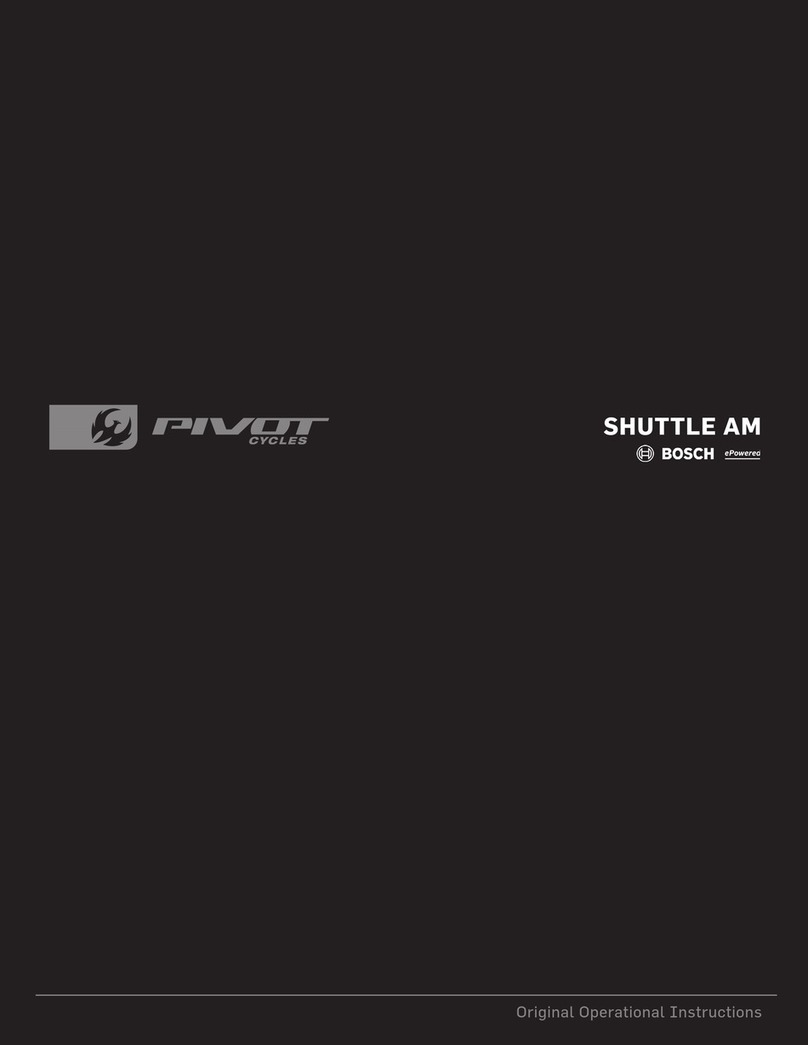
Bosch
Bosch PIVOT SHUTTLE AM Quick start guide
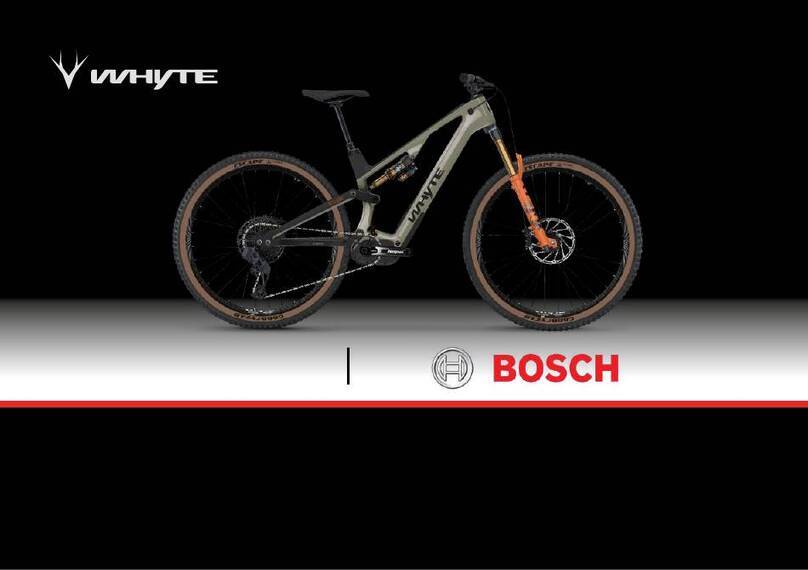
Bosch
Bosch WHYTE E-Lyte 140 User manual
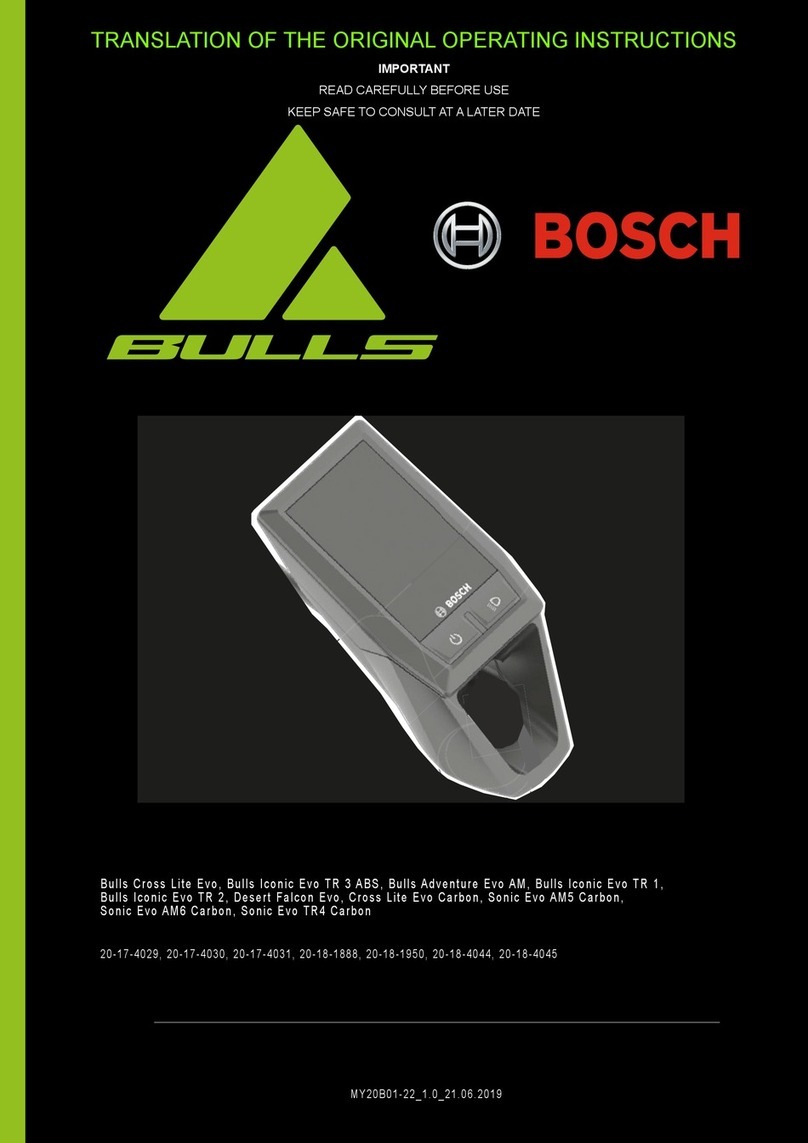
Bosch
Bosch Bulls Cross Lite Evo User manual
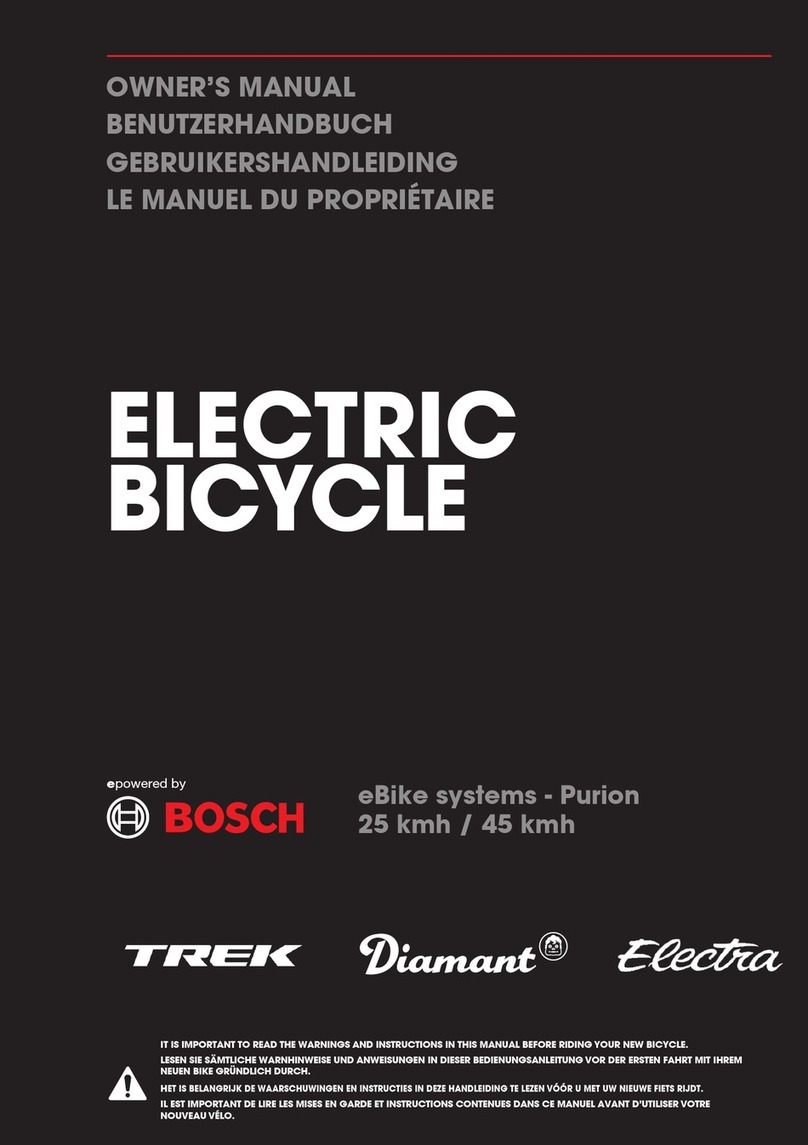
Bosch
Bosch Performance Line BDU365 User manual
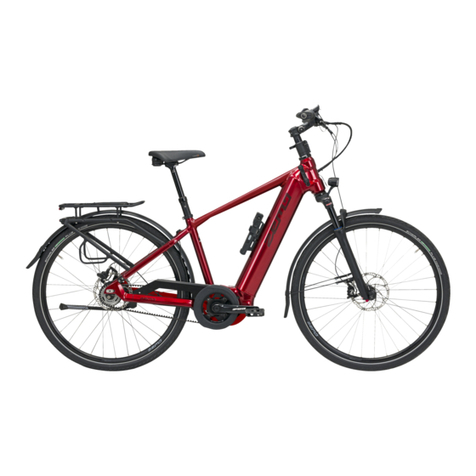
Bosch
Bosch ZEMO SU-E FS 12 Wiring diagram

Bosch
Bosch Kiox User manual

Bosch
Bosch Purion BUI210 User manual

Bosch
Bosch FLYER Mountain Quick start guide
